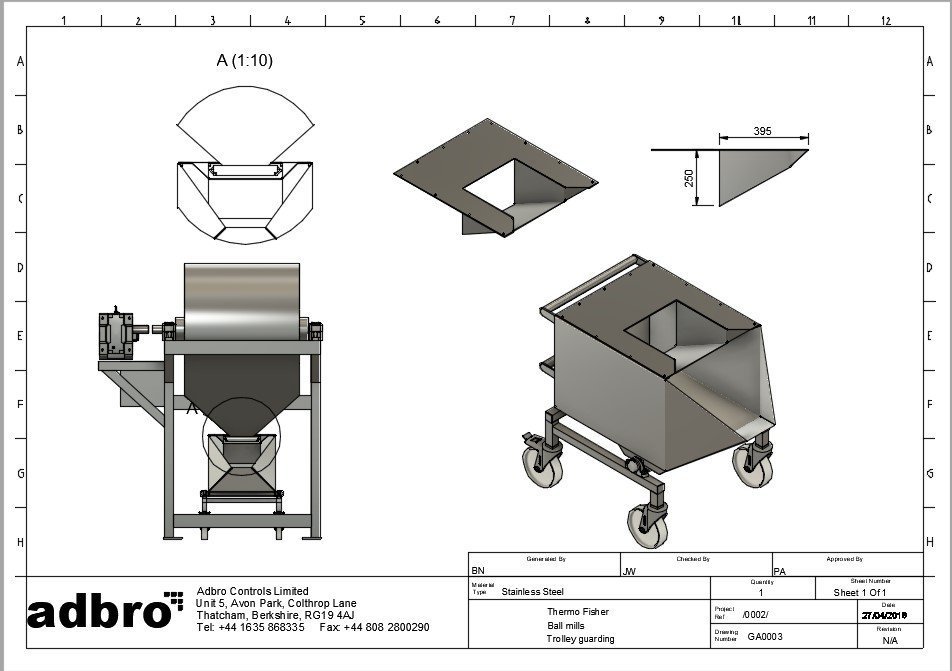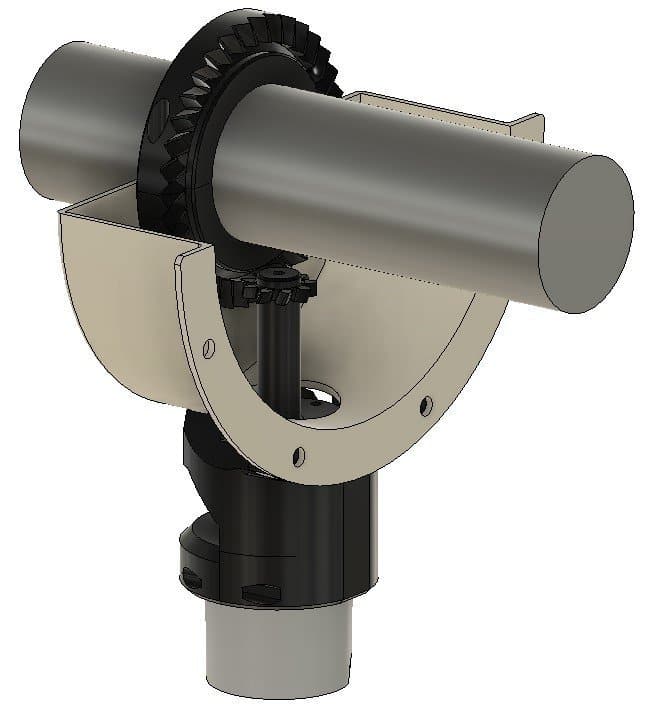Ball Mill Control System Upgrade
Harnessing modern control systems for enhanced performance and safety in ball mills
The Challenge: Aging Control System Fails to Meet Safety and Operational Standards
As a globally esteemed biotechnology product development company, Thermo Fisher Scientific was confronted with a pressing need to replace their aging ball mill control system. While their current system remained operative, it was nearing the end of its lifecycle and did not meet contemporary safety standards. This led to a two-fold mission for Thermo Fisher – firstly, to implement a new control system capable of perfectly replicating a previously validated process, and secondly, to design a system that was future-ready, flexible enough to incorporate further improvements, and facilitate the transition towards process automation.
Recognizing the depth of our expertise, Thermo Fisher chose to collaborate with us, Adbro, for this complex Good Automated Manufacturing Practice (GAMP) project. Our role went beyond just delivering a ball mill control system upgrade; we also provided consultation on machine safety concepts, ensuring adherence to the stringent EN ISO 13849-1 safety standards.


CAD drawing of ball mill

Encoder bracket
The Solution: A Holistic Approach Combining Mechanical and Electrical Upgrades
To tackle the task at hand effectively, our solution was a two-pronged approach that involved meticulous mechanical and electrical upgrades. Each of these components was designed with a keen emphasis on robustness, safety, and future scalability.
Mechanical
In this facet of our solution, we delved into a multitude of mechanical aspects to ensure the successful upgrade of the ball mill control system:
- Wiring and Installation: The wiring and final installation process required an efficient way to secure cables. To meet this need, we opted for a 304-grade stainless-steel basket, known for its durability and resistance to corrosion, to provide a reliable safeguarding system for the cables.
- Custom-Built Trolley: The process of emptying the alumina balls from the mills required a bespoke solution. We designed and fabricated a stainless-steel trolley, fully compliant with FDA standards, ensuring it met all safety requirements. A notable feature of the trolley was a coded actuator, mounted to allow the safety system to detect when the trolley was fully inserted onto the ball mill outlet.
- Positioning System: The new positioning system posed a unique challenge due to the lack of allowance for mounting an encoder by the machine builder. To overcome this hurdle, we opted for a completely bespoke coupling arrangement. A helical face gear split in half was mounted onto the shaft as a collar, with the encoder integrated into a bracket assembly with a supported shaft and pinion on the end. This assembly was strategically placed through the shaft guard. To achieve this intricate setup, we used 3D printing with FDM technology, using a high-performance carbon/nylon composite material.
Electrical
Our approach on the electrical side entailed a carefully planned execution using state-of-the-art Siemens technology:
- Control System: The heart of the control system was a Siemens S71500 CPU, integrated into the compact ET200SP IO system. This ultra-modern, failsafe controller facilitated the smooth integration of the safety system with the control system, enhancing safety without compromising control functionality.
- Safety Devices: Prioritizing safety, we implemented Pilz-based safety devices. These included emergency stop buttons with integrated lights for quick field diagnostics, and a solenoid locking system on the infeed hatch, which incorporated a rundown timer to prevent system access until the machine had come to a complete stop. Furthermore, a coded magnet switch was installed on the ball mill’s outfeed, which monitored whether the trolley or valve was inserted on the outlet.
- Distributed Control System: Recognizing the need for reduced field wiring and faster installation, we deployed a distributed control system. Siemens ET200SP remote IO was mounted on each ball mill, drastically reducing wiring and hastening the installation process.
- Drives: To provide a seamless and efficient control mechanism, we utilized Siemens series G120C inverters. These drives integrated seamlessly with the PLC via PROFINET and could be configured using the same software package as the PLC. Their compatibility with the failsafe PLC allowed for the implementation of drive safety over the communication channel, using PROFISAFE.
- Human-Machine Interface (HMI): The Siemens HMI provided a user-friendly interface compliant with CFR21 part 11. This interactive platform allowed operators to control timers, positioning, data logging, user tracking, and equipment diagnostics. It also stored PDFs for control system manuals and electrical schematics, serving as a convenient reference point for operators and technicians.
This comprehensive solution catered to both the mechanical and electrical aspects of the upgrade, bringing about a drastic improvement in the ball mill’s control system while ensuring future scalability and improvements.
The Result: A Success Story of Streamlined Operations, Advanced Safety, and Enhanced Traceability
The new ball mill control system provided an array of benefits to Thermo Fisher Scientific. This successful upgrade brought about several key improvements:
- Efficient Process Replication: One of the critical requirements was the new control system’s ability to mirror the validated process, particularly ensuring that speed was maintained correctly. The new system successfully fulfilled this requirement, offering seamless process continuity.
- Simplicity in Operation: Significant strides were made to simplify machine operation. Manual operations, such as moving the hatch and securing the drum with a bolt, were eliminated. The hatch would automatically unlock once the mill was at a standstill, simplifying controls on the mill and enhancing safety.
- Enhanced Traceability: The new control system brought a new level of traceability. The HMI recorded all operator interactions, enforcing accountability by requiring users to be logged into the system to operate it. Electronic signatures were also implemented for process-critical values, increasing traceability and enhancing process integrity.
- Advanced Diagnostics: The new system boasted superior diagnostic capabilities. The HMI’s ability to log alarms and monitor I/O allowed technicians to identify system faults with greater ease and precision. This enhancement greatly improved the efficiency and speed of fault detection and resolution.
- Improved Safety: Safety measures received a significant boost. The combination of mechanical guarding and safety switches, along with a global emergency stop philosophy, substantially enhanced the overall safety. This innovative approach allowed any emergency stop on a ball mill to halt the entire system.
- Future-Ready Upgrades: The system was designed with a vision for the future. With this in mind, the new system was equipped to accommodate future upgrades, ensuring that no hardware would need to be replaced due to unsupported functionality or obsolescence.
To sum up, the ball mill control system upgrade was a resounding success. The blend of mechanical and electrical enhancements led to a robust, safe, and easy-to-use control system that met all of Thermo Fisher Scientific’s needs. More importantly, it provided a foundation for future improvements and automation, highlighting the lasting benefits of well-designed, future-ready solutions.
